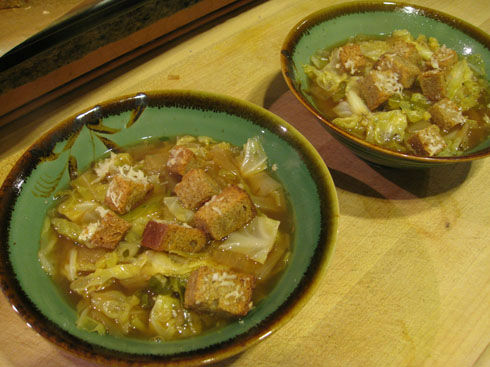This week’s guest blogger is David King from the Learning Garden. He’s a great friend and an amazing gardener who does more for the Los Angeles gardening scene than I have space to write. He is currently writing a book on growing food in Southern California, and today he shares his helpful tips for managing apple scab. Take it away David!
For many of us wanting to grow more food on our own, fruits and nuts from trees comprise a major part of our food plans. Fruit-bearing trees produce so much more food for so little effort that, once they are established, many of us consider them a “no-brainer.”
They are not without effort, however. They do require some pruning and get diseases that require attention on such diseases is called Apple Scab. This is a fungus infection (Venturia inaequalis) in apples. Affected apples get an ugly spot that makes the apple look unpalatable, however, the blemish, like beauty, is only skin deep. Still, the first time on sees apple scab on apples, the first thought is definitely not, “Yummy!”.

Apples with apple scab
Like all fungi, apple scab thrives in moist conditions, a condition hard to avoid if you live within easy access of the ocean. Some varieties are more prone to it than others and I have the dubious fortune of owning several: Anna and Dorsett Golden. There are not many varieties of apples that will do well in a climate with so few cold hours, so learning what to do about it has got to be a priority.
The disease infests the leaves as well as the fruit – these leaves fall to the ground where the fungal spores wait to re-infest next year’s leaves and fruits. The key is to interrupt this cycle.
What to Do?
After the current year’s harvest is over, comb the tree looking for leaves that show signs of lesions. Get them off the tree. Try to get all of them – those you do not get are going to fall to the ground where they will infest next year’s crop. The plan is to stop the process of re-infestation.
With the infested fruit and leaves removed from the tree, spread a cardboard layer out from the base of the tree out to the edge of the drip line. Cover the cardboard with wood chips as deep as you can, up to a foot deep. This will decompose over time – the idea is to entomb the spores lying on the ground under this mulch to prevent the spores from being splashed up into the fruit and branches of next year’s crop. When doing the annual pruning, take care to remove all the cut wood from this area as it too may contain fungal spores.
What to Expect
This process will not eliminate the disease. It will, however, cut down on fruit losses from the disease and will enable a more respectable harvest. Plan to repeat this procedure on down the line. The organic remedies to apple scab include copper, Bordeaux or soluble sulfur mixtures that provide no more control than the method above and most of those proposed solutions will contribute to the death of beneficial insects and bacteria—not a bonus. The best control comes from planting resistant varieties if you live in an area with more cold weather than coastal Southern California. Better to eat apples with apple scab than to attack your environment with poisons.

Apples with scab are perfectly fine on the inside, and still good to eat.
The apple interior is not affected, so look for recipes that will use your apples peeled and cooked. Apple pie, apple cobbler, applesauce, apple juice and a host of other apple products can become a part of your strategy to deal with apple scab.
For more information about The Learning Garden and all that David is doing, take the Learning Garden’s Virtual Tour.




Good and need Ed info..
Is there something that we can hang in the trees to deter insects.
Not for apple scab, which is caused by coddling moth and maggot borers. But you can use maggot barriers early in the season to prevent them from penetrating the fruit. There are kaolin clay sprays you can apply as well. I know you can also hand lures to draw them away from the fruit, but pheromone attractants can often backfire, bringing more of them to the tree, rather than repelling them. Lures and pheromone traps are supposed to confuse them, but it doesn’t always throw off their mating as hoped.
We do a lot of spraying to fight scab in the tropics. Is this not dangerous to consumers?
It all depends on what spray is being used. I find that even organic sprays such as copper can be toxic at high levels. I prefer to find a natural predator or use compost tea to treat most issues. Then nature takes care of it on its own.
Can I eat fresh ( not cooking ) apple with scab,Just the good part ….Thank u from UTAH ??
Hi Analy, Yes, you can still eat apples affected with apple scab. Just peel and cut out the bad parts. Then enjoy the rest.
Friends of mine eat the skins of apples with apple scab and make applesauce without removing the skin. Is this dangerous? Thanks for you help!
I’ve never heard of it being dangerous. A couple of University publications I researched confirm that it is a cosmetic fungal infection and the apples are safe to eat. I imagine that the process of boiling the applies would kill off any fungi lingering on the skins. Nothing to worry about from what I can tell.
Just because nobody has proved that eating apple scab is harmful doesn’t mean that it is not. Fungal infections should always be regarded with suspicion. The problem is that any harmful effect is likely to be so slow to act that making any link to eating scabby apple skin would be virtually impossible. After all we have no idea what brings on numerous health afflictions. Add to that, some may be affected but not others. I would treat it like eating green or heavily sprouting potatoes, under-cooked kidney beans or peering into a microwave while it is on in case of a malfunction in the microwave shield, all easy to avoid and reduces the chance of a mishap. No, I don’t suffer from compulsive disorders, just see no point in playing the odds when it comes to health 🙂
Very helpful on my horticulture report, thank you.